Mung Bean
How to submit an article:
- Registered users can submit any published journal article that has a unique DOI (Digital Object Identifier) name or link to Research Hub.
- For example, you can paste the full DOI link:
https://doi.org/10.1109/5.771073or just the DOI name:10.1109/5.771073into the field above and click submit. - The person who is first to submit a valid article to Research Hub will forever be credited for it, and every article submission earns you +6 Research Points.
Related Topics
Published research studies are articles that present the findings of original research that has undergone a peer-review process and has been made publicly available in scholarly journals, books or other media.
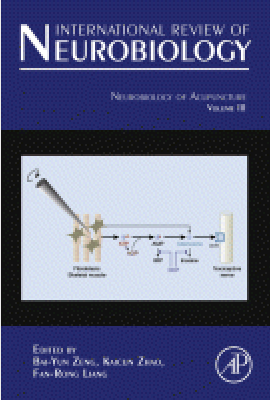
A survey of biological nitrogen fixation in adzuki beans, soybeans, and mung beans, three legumes in traditional Chinese medicine
2022 Jan International Review of Neurobiology Shahrajabian MH, Sun W, Cheng Q
Review Article Soybean Adzuki BeanAdzuki and Mung beans have great potential as functional foods for health promotion and disease prevention, offering an excellent source of essential nutrients and biodiversity for sustainable agriculture.

Potentially Bioaccessible Phenolics from Mung Bean and Adzuki Bean Sprouts Enriched with Probiotic—Antioxidant Properties and Effect on the Motility and Survival of AGS Human Gastric Carcinoma Cells
2020 Jun 28 Molecules Świeca M, Herok A, Piwowarczyk K, Sikora M, Ostanek P, Gawlik-Dziki U, et al.
Experimental Study Adzuki Bean Mung Bean Stomach CancerProbiotic-enriched mung and adzuki bean sprouts demonstrate increased antioxidant potential and exhibit cytostatic and cytotoxic effects on human stomach cancer cells.

Mung Bean (Vigna radiata L.): Bioactive Polyphenols, Polysaccharides, Peptides, and Health Benefits
2019 May 9 Nutrients Hou, D., Yousaf, L., Xue, Y., et al.
Systematic Review Mung BeanThe mung bean has been documented to ameliorate hyperglycemia, hyperlipemia, and hypertension, and prevent cancer and melanogenesis, as well as possess hepatoprotective and immunomodulatory activities.
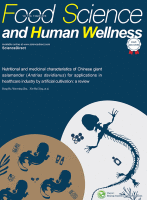
A critical review on phytochemical profile and health promoting effects of mung bean (Vigna radiata)
2018 Mar Food Science and Human Wellness Kumar Ganesan, Bao junXu
Systematic Review Mung BeanThe consumption of mung beans and sprouts in regular basis are not only providing nutrients, but also maintains the microbial flora in the gut, reduces the absorption of toxic compounds, decreases the menace of obesity, hypercholesterolemia, and cardiovascular diseases, and also prevents cancer and diabetes.
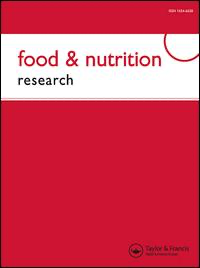
Mung bean proteins and peptides: nutritional, functional and bioactive properties
2018 Feb Food & Nutrition Research Zhu, Y.-S., Shuai, S., & FitzGerald, R.
This scientific article has highlighted the health benefits of mung beans. In particularly the anti-fungal and antibacterial protein, which also has anti-mitogenic activities. Thus, it is a great source of bioactive nutritional protein in daily lives.
Systematic ReviewResearch insights are moderated by the Research Hub team and offer an at-a-glance overview of interesting research findings.

2022 International Review of Neurobiology
Adzuki and Mung beans have great potential as functional foods for health promotion and disease prevention, offering an excellent source of essential nutrients and biodiversity for sustainable agriculture.
Review Article Adzuki Bean Soybean
A survey of biological nitrogen fixation in adzuki beans, soybeans, and mung beans, three legumes in traditional Chinese medicine
Shahrajabian MH, Sun W, Cheng Q

2020 Molecules
Probiotic-enriched mung and adzuki bean sprouts demonstrate increased antioxidant potential and exhibit cytostatic and cytotoxic effects on human stomach cancer cells.
Experimental Study Adzuki Bean Stomach Cancer
Potentially Bioaccessible Phenolics from Mung Bean and Adzuki Bean Sprouts Enriched with Probiotic—Antioxidant Properties and Effect on the Motility and Survival of AGS Human Gastric Carcinoma Cells
Świeca M, Herok A, Piwowarczyk K, Sikora M, Ostanek P, Gawlik-Dziki U, et al.

2019 Nutrients
The mung bean has been documented to ameliorate hyperglycemia, hyperlipemia, and hypertension, and prevent cancer and melanogenesis, as well as possess hepatoprotective and immunomodulatory activities.
Systematic Review
Mung Bean (Vigna radiata L.): Bioactive Polyphenols, Polysaccharides, Peptides, and Health Benefits
Hou, D., Yousaf, L., Xue, Y., et al.

2018 Food Science and Human Wellness
The consumption of mung beans and sprouts in regular basis are not only providing nutrients, but also maintains the microbial flora in the gut, reduces the absorption of toxic compounds, decreases the menace of obesity, hypercholesterolemia, and cardiovascular diseases, and also prevents cancer and diabetes.
Systematic Review
A critical review on phytochemical profile and health promoting effects of mung bean (Vigna radiata)
Kumar Ganesan, Bao junXu
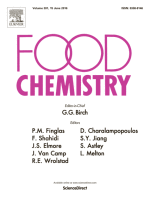
2016 Food Chemistry
In 2004, polyphenols were isolated from mung bean sprouts, which exert antibacterial activity against Helicobacter pylori, one of the most common causative organisms in gastrointestinal disorders.
Experimental Study Antibacterial H Pylori
Phytochemical distribution in hull and cotyledon of adzuki bean (Vigna angularis L.) and mung bean (Vigna radiate L.), and their contribution to antioxidant, anti-inflammatory and anti-diabetic activities
Jiaqiang Luo, Weixi Cai, Tong Wu, Baojun Xu
Review Articles
Review articles summarise and critically evaluate the current state of research on a specific topic or field by synthesising multiple primary research studies.

A survey of biological nitrogen fixation in adzuki beans, soybeans, and mung beans, three legumes in traditional Chinese medicine
2022 Jan International Review of Neurobiology Shahrajabian MH, Sun W, Cheng Q
Review Article Soybean Adzuki BeanAdzuki and Mung beans have great potential as functional foods for health promotion and disease prevention, offering an excellent source of essential nutrients and biodiversity for sustainable agriculture.

Mung Bean (Vigna radiata L.): Bioactive Polyphenols, Polysaccharides, Peptides, and Health Benefits
2019 May 9 Nutrients Hou, D., Yousaf, L., Xue, Y., et al.
Systematic Review Mung BeanThe mung bean has been documented to ameliorate hyperglycemia, hyperlipemia, and hypertension, and prevent cancer and melanogenesis, as well as possess hepatoprotective and immunomodulatory activities.
Mentioned TCM — 18 Aug 2021

A critical review on phytochemical profile and health promoting effects of mung bean (Vigna radiata)
2018 Mar Food Science and Human Wellness Kumar Ganesan, Bao junXu
Systematic Review Mung BeanThe consumption of mung beans and sprouts in regular basis are not only providing nutrients, but also maintains the microbial flora in the gut, reduces the absorption of toxic compounds, decreases the menace of obesity, hypercholesterolemia, and cardiovascular diseases, and also prevents cancer and diabetes.

Mung bean proteins and peptides: nutritional, functional and bioactive properties
2018 Feb Food & Nutrition Research Zhu, Y.-S., Shuai, S., & FitzGerald, R.
This scientific article has highlighted the health benefits of mung beans. In particularly the anti-fungal and antibacterial protein, which also has anti-mitogenic activities. Thus, it is a great source of bioactive nutritional protein in daily lives.
Systematic Review
A review of phytochemistry, metabolite changes, and medicinal uses of the common food mung bean and its sprouts (Vigna radiata)
2014 Jan 17 BMC Chemistry Tang, D., Dong, Y., Ren, H. et al.
Systematic ReviewMung bean protein, tannin, and other polyphenols are thought to combine with organophosphorus pesticides, mercury, arsenic, and other heavy metals, promoting the excretion of sediments from the body.
A study demonstrated that all pro-inflammatory cytokines, including interleukin (IL)-1β, IL-6, IL-12β, tumor necrosis factor (TNF)-α, and inducible NO synthase (iNOS), were dramatically down regulated in cells treated with 3.7 mg/mL polyphenols.
Germination is thought to improve the nutritional and medicinal qualities of mung beans.
Clinical Trials
Clinical trials are research studies that involve people and are conducted to evaluate the safety and efficacy of new treatments or interventions, such as drugs, medical devices, or behavioural therapies.
Study Protocols
Published study protocols are detailed plans that outline the objectives, methodology, statistical analyses, and organisation of a research study that have been made publicly available for others to review and use as a reference.
Presentation Slides

Review Article
Adzuki and Mung beans have great potential as functional foods for health promotion and disease prevention, offering an excellent source of essential nutrients and biodiversity for sustainable agriculture.
Shahrajabian MH, Sun W, Cheng Q

Experimental Study
Probiotic-enriched mung and adzuki bean sprouts demonstrate increased antioxidant potential and exhibit cytostatic and cytotoxic effects on human stomach cancer cells.
Świeca M, Herok A, Piwowarczyk K, Sikora M, Ostanek P, Gawlik-Dziki U, Kapusta I, Czyż J

Systematic Review
The mung bean has been documented to ameliorate hyperglycemia, hyperlipemia, and hypertension, and prevent cancer and melanogenesis, as well as possess hepatoprotective and immunomodulatory activities.
Hou, D., Yousaf, L., Xue, Y., Hu, J., Wu, J., Hu, X., Feng, N., & Shen, Q. (2019).

Systematic Review
The consumption of mung beans and sprouts in regular basis are not only providing nutrients, but also maintains the microbial flora in the gut, reduces the absorption of toxic compounds, decreases the menace of obesity, hypercholesterolemia, and cardiovascular diseases, and also prevents cancer and diabetes.
Kumar Ganesan, Bao junXu

Experimental Study
In 2004, polyphenols were isolated from mung bean sprouts, which exert antibacterial activity against Helicobacter pylori, one of the most common causative organisms in gastrointestinal disorders.
Jiaqiang Luo, Weixi Cai, Tong Wu, Baojun Xu
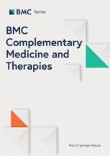
Mung bean sprout extract has potent antiviral and to a lesser extent, prophylactic activities against both RSV and HSV-1, and in case of HSV-1, these activities were comparable to Acyclovir.
Hafidh, R.R., Abdulamir, A.S., Abu Bakar, F. et al.

Systematic Review
Germination is thought to improve the nutritional and medicinal qualities of mung beans.
Tang, D., Dong, Y., Ren, H. et al.

Systematic Review
A study demonstrated that all pro-inflammatory cytokines, including interleukin (IL)-1β, IL-6, IL-12β, tumor necrosis factor (TNF)-α, and inducible NO synthase (iNOS), were dramatically down regulated in cells treated with 3.7 mg/mL polyphenols.
Tang, D., Dong, Y., Ren, H. et al.

Systematic Review
Mung bean protein, tannin, and other polyphenols are thought to combine with organophosphorus pesticides, mercury, arsenic, and other heavy metals, promoting the excretion of sediments from the body.
Tang, D., Dong, Y., Ren, H. et al.
Executive Summary
Write an executive summary in the form of a blog article on the topic of "Research into Chinese medicine treatment for Mung Bean" summarising the research below and using language that can be easily understood by patients and avoiding medical jargon using a professional and caring tone of voice.
Write an executive summary in the form of a blog article on the topic of "Researched Chinese medicine treatments for Mung Bean" summarising the research below in an objective and easy to understand way, and using language that can be easily understood by patients. Group the article into Chinese medicine treatments first, followed by nutrition and other treatments. Avoid using medical jargon and use a professional and caring tone of voice.
Write me a concise but easy to understand executive summary on the topic of "Chinese medicine treatments for Mung Bean" based on the following research that I will give you. Your summary should be 2 paragraphs long in Australian English spelling and include references to the studies.
A Review Article published in 2022 in the journal International Review of Neurobiology found that Adzuki and Mung beans have great potential as functional foods for health promotion and disease prevention, offering an excellent source of essential nutrients and biodiversity for sustainable agriculture. This study explores the health benefits and agricultural sustainability of adzuki and mung beans. Adzuki beans, traditionally used in traditional Chinese medicine, provide essential fatty acids, fiber, minerals, and phytochemicals promoting health and combating disease. These beans also have natural nitrogen-fixing properties beneficial to cropping systems. Similarly, mung beans contribute protein and nitrogen to agriculture, supporting soil health and crop yields. They also offer health benefits including antioxidant, antifungal, antiinflammatory, and antimicrobial activities. Additionally, both adzuki and mung beans, through biological nitrogen fixation, may lessen reliance on chemical fertilizers, promoting environmental and economic sustainability. The results suggest both adzuki and mung beans can play a significant role in health promotion and in sustainable agriculture. Influencing health with their nutrient richness and variety, these beans provide essential fatty acids, fiber, minerals, and phytochemicals. With their nitrogen-fixing properties, they can enhance soil quality and reduce dependence on chemical fertilizers. Simultaneously, by being able to restore organic matter to the soil, they can curb pests and disease issues. Thus, these beans serve as a viable economic and environmental option for future agricultural systems while promoting health.
A Experimental Study published in 2020 in the journal Molecules found that Probiotic-enriched mung and adzuki bean sprouts demonstrate increased antioxidant potential and exhibit cytostatic and cytotoxic effects on human stomach cancer cells. The study utilized mung bean sprouts (MBS) and adzuki bean sprouts (ABS), enriched with probiotic strain 299v, and their gastric digests were tested on human stomach cancer cells, AGS. Differentiation was shown through ABS containing quercetin and kaempferol derivatives while MBS featured kaempferol and apigenin derivatives, each displaying a higher antioxidant potential compared to controls. The viability of AGS reduced notably with low concentrations of ABS extracts, displaying inhibitive action which pointed to their cytostatic effects. In discussing the results, it is noticed that the sprouts showcased dose-independent cytostatic effects. However, ABS extracts were found to be more effective in reducing the proliferation of AGS, compared to MBS. Notably, the ABS extracts exerted about 70% inhibitions, elucidating their strong inhibitive power. Concurrently, the phytochemicals from these probiotic-enriched sprouts were observed to reduce the associated activity significantly. Observations of increased vinculin level, apoptotic shape of cell nuclei, alongside decreased cell motility and proliferation provide evidence that these extracts exhibited not only cytostatic but also cytotoxic activity.
A Systematic Review published in 2019 in the journal Nutrients found that The mung bean has been documented to ameliorate hyperglycemia, hyperlipemia, and hypertension, and prevent cancer and melanogenesis, as well as possess hepatoprotective and immunomodulatory activities. The mung bean has been documented to ameliorate hyperglycemia, hyperlipemia, and hypertension, and prevent cancer and melanogenesis, as well as possess hepatoprotective and immunomodulatory activities. These health benefits derive primarily from the concentration and properties of those active compounds present in the mung bean. Vitexin and isovitexin are identified as the major polyphenols, and peptides containing hydrophobic amino acid residues with small molecular weight show higher bioactivity in the mung bean.
A Systematic Review published in 2018 in the journal Food Science and Human Wellness found that The consumption of mung beans and sprouts in regular basis are not only providing nutrients, but also maintains the microbial flora in the gut, reduces the absorption of toxic compounds, decreases the menace of obesity, hypercholesterolemia, and cardiovascular diseases, and also prevents cancer and diabetes. Based on the high constituents and efficacy of the bioactive compounds, mung beans are playing a greater role in radical scavenging activities, detoxification, and also exhibits chemo-preventive effects. These compounds have the potential health benefit as a complementary and alternative medicine which is exerted for its antioxidant, hepatoprotective, antibacterial, antifungal, antiviral, cardioprotective, anti-inflammatory, antidiabetic, anticancer, anti-obesity, hypolipidemic, and potent chemopreventive properties.
A Experimental Study published in 2016 in the journal Food Chemistry found that In 2004, polyphenols were isolated from mung bean sprouts, which exert antibacterial activity against Helicobacter pylori, one of the most common causative organisms in gastrointestinal disorders. The utility of bioactive compounds from food legumes as natural antimicrobial agents are commonly known as biocides. Mung bean sprouts have potent antiviral and prophylactic activities against respiratory syncytial virus and Herpes Simplex virus −1, and these activities were comparable with Acyclovir. The underlying mechanism was attributed to active components of mung bean sprouts potentially induce antiviral cytokines in human cells and thereby nullify the actions on viral proliferation. Similarly, antifungal and antiviral potency of two beans proteins, designated alpha (28 kDa) and beta (28 kDa) proteins were isolated and were capable of inhibiting human immunodeficiency virus reverse transcriptase and glycohydrolases associated with HIV infection. Further, antifungal peptides (7.3 kDa, 9.03 kDa) were isolated from beans, which exerted an antifungal effects and inhibited mycelial growth in Fusarium oxysporum, F. solani, Pythium aphanidermatum, Sclerotium rolfsii, Mycosphaerella arachidicola, and antibacterial effects on Staphylococcus aureus. In addition, two proteins, Mungin (18-kDa) and chitinase (30.8 kDa) isolated from mung bean seeds possess antifungal activity against Rhizoctonia solani, Coprinus comatus, Mycosphaerella arachidicola, Botrytis cinerea, and Fusarium oxysporum. Mungin and chitinase exert an inhibitory activity against α- and β-glucosidases, suppressing [3H] thymidine in the corporation by mouse splenocytes. In 2004, polyphenols were isolated from mung bean sprouts, which exert antibacterial activity against Helicobacter pylori, one of the most common causative organisms in gastrointestinal disorders. Furthermore, several in vitro and in vivo studies have also been reported that mung bean seeds are protective against sepsis.
A published in 2015 in the journal BMC Complementary Medicine and Therapies found that Mung bean sprout extract has potent antiviral and to a lesser extent, prophylactic activities against both RSV and HSV-1, and in case of HSV-1, these activities were comparable to Acyclovir. MBS extract has potent antiviral and to a lesser extent, prophylactic activities against both RSV and HSV-1, and in case of HSV-1, these activities were comparable to Acyclovir. Part of the underlying mechanism(s) of these activities is attributed to MBS potential to remarkably induce antiviral cytokines in human cells. Hence, we infer that MBS methanol extract could be used as such or as purified active component in protecting and treating RSV and HSV-1 infections. More studies are needed to pinpoint the exact active components responsible for the MBS antiviral activities.
A Systematic Review published in 2014 in the journal BMC Chemistry found that Germination is thought to improve the nutritional and medicinal qualities of mung beans. In recent years, studies have shown that the sprouts of mung beans after germination have more obvious biological activities and more plentiful secondary metabolites since relevant biosynthetic enzymes are activated during the initial stages of germination. During the germination process of the mung bean, its chemical constituents undergo a series of biochemical reactions. One such reaction is the synthesis of small active compounds from macromolecular substances, promoting absorption and utilization. Another change observed during germination is the formation and accumulation of many types of active substances, such as polyphenols, saponins, vitamin C, etc. Therefore, we believes that these changes in the chemical composition of mung beans during germination will lead to substantial and important changes in the pharmacological activities of mung beans as well.
A Systematic Review published in 2014 in the journal BMC Chemistry found that A study demonstrated that all pro-inflammatory cytokines, including interleukin (IL)-1β, IL-6, IL-12β, tumor necrosis factor (TNF)-α, and inducible NO synthase (iNOS), were dramatically down regulated in cells treated with 3.7 mg/mL polyphenols. In Asia, mung beans have been used in various cuisines and in folk remedies to treat toxic poisoning, heat stroke associated with thirst, irritability, and fever; these beneficial effects of mung beans are thought to be related to the inflammatory response. Researchers have analyzed the anti-inflammatory effects of mung bean ethanol extracts on lipopolysaccharide (LPS)-stimulated macrophages. The extract mainly included polyphenols, gallic acid, vitexin, and isovitexin and markedly reduced the activity of murine macrophages through the prevention of pro-inflammatory gene expression without cytotoxicity. Moreover, a study demonstrated that all pro-inflammatory cytokines, including interleukin (IL)-1β, IL-6, IL-12β, tumor necrosis factor (TNF)-α, and inducible NO synthase (iNOS), were dramatically down regulated in cells treated with 3.7 mg/mL polyphenols. These results suggested that the ethanol extract had great potential to improve the clinical symptoms of inflammation-associated diseases, such as allergies and diabetes. The immune modulatory activities of mung bean water extracts and monomers on human peripheral blood mononuclear cells (PBMCs) have also been evaluated by BrdU immunoassay, secretion of interferon-gamma (IFN-γ) and IL-10, and elucidation of the responding cells by flow cytometry. The results demonstrated that 20 μg/mL genistein, phytic acid, and syringic acid induce a Th1-predominant immune response through significant suppression of IL-10 secretion and promotion of IFN-γ secretion. The study concluded that several non-nutritional ingredients of mung beans, such as flavonoids, acids, and plant hormones, are most likely to be important in the modulation of human immunity.
A Systematic Review published in 2014 in the journal BMC Chemistry found that Mung bean protein, tannin, and other polyphenols are thought to combine with organophosphorus pesticides, mercury, arsenic, and other heavy metals, promoting the excretion of sediments from the body. In ancient books, mung beans were well known for their detoxification activities. Mung bean protein, tannin, and other polyphenols are thought to combine with organophosphorus pesticides, mercury, arsenic, and other heavy metals, promoting the excretion of sediments from the body. Mung beans have been shown to possess antioxidant, antimicrobial, and anti-inflammatory activities. Moreover, mung beans have antidiabetic, antihypertensive, lipid metabolism accommodation, antihypertensive, and antitumor effects, among others.
Moderation Tools
Topic
Sign In
Users not signed in are limited to viewing the 5 most recent items of content.
Mentioned TCM — 18 Aug 2021